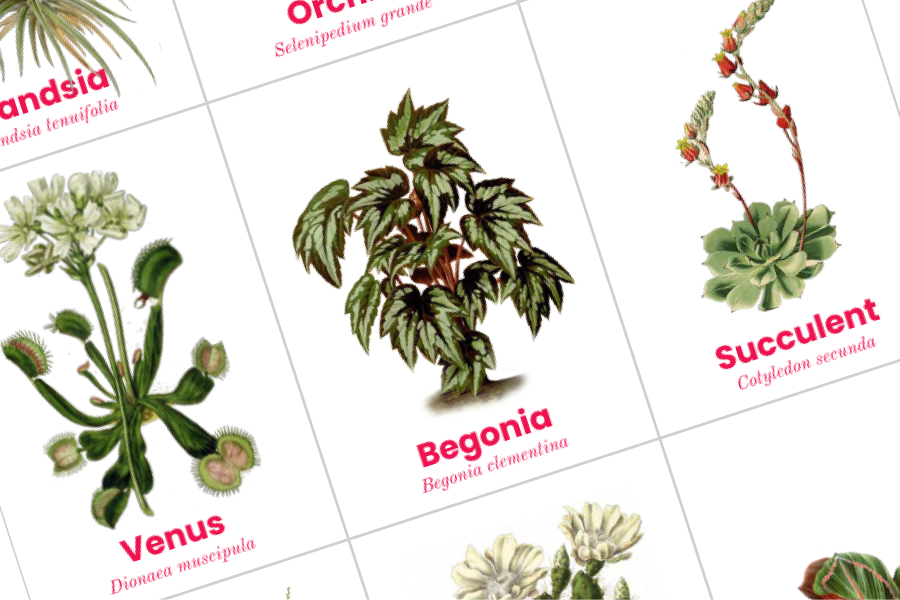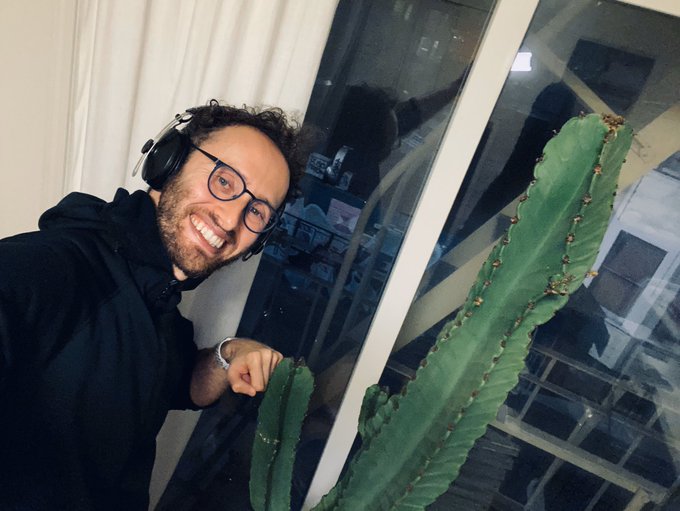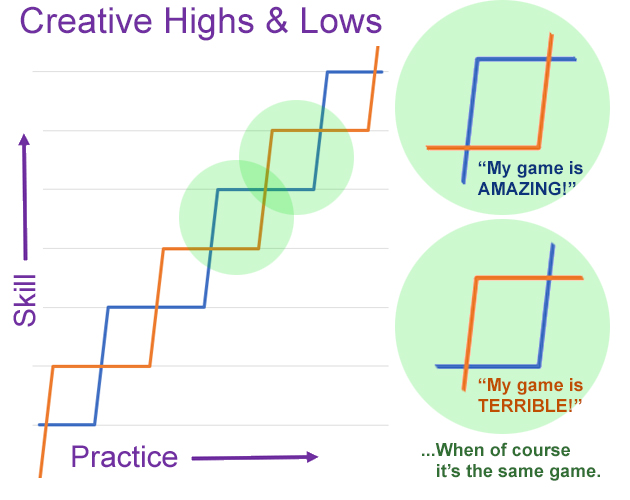2019.45: haddaway, no duck, cobrassss!

Pieter de Pannemaeker from Jean Linden's l'Illustration Horticole, Brussels, 1888.
Golden Cobra! 🙌 🎉 🌱
My game “They Say You Should Talk To Your Plants” was awarded at the Golden Cobras! This friendly contest brings out such a joyful creative explosion and this year is no different—I’m so honored and also so excited to read everyone else’s beautiful games!
They Say You Should Talk to Your Plants is a beautifully quiet game about loneliness, the passage of time, and the conversations one has with their plants. Throughout the game, each player experiences existence both as the human protagonist who is navigating the hurdles of life and as one of the protagonist’s attentive plants. We appreciated the unique role that silence plays in emphasizing the simultaneously sweet and isolating experience of talking to an audience who can’t reply in turn (for the most part!). This game is ultimately about caring for each other, whether you are a withering plant or a lonely human.
Me & my co-designer celebrating our Golden Cobra award
Also a couple of updates on The Zone. The site now features Veronique Meignaud’s beautiful cover artwork. So grateful to have had a chance to collaborate with her and love how it turned out! (Also super fun to animate it—try moving your mouse)
I also wrote up a thread on the Big Bad Con experience of running The Zone, putting it in context of all the ways it’s been staged in the past. One of the players, ErikTheBearik, was also kind enough to review his experience!
Still planning a Kickstarter soon—sign up for the mailing list to hear about it!
Writings
Keith Stuart writes about the The Healing Power of Making Video Games Like ‘Minecraft’. This really struck me. If making video games is therapeutic, does the more participatory nature of tabletop RPGs & larp also allow players to experience more healing from playing them?
Ten years ago, Seema Iyer was on a night out while living in Mexico when a friend of a friend offered her a lift home and then assaulted her. […] In 2017, she joined Fusebox Games, the developer of /Love Island/, a smartphone dating game based around the reality TV series in which young people in a tropical villa hook up. She became a narrative designer on the second season of the game, and in the early stages of development, when the team got together to discuss the mechanics and ethics of sex and relationships, she found she was able to confront what she’d experienced in Mexico without feeling overcome.
“We were having really frank conversations about safe sex and consent,” Iyer says. “Approaching consent as a writer caused me much less anxiety. The whole process of writing characters who were aware of the need for consent, working on a game that talks about women’s bodies, women enjoying sex but also being able to say no, was healing. What he’d done — it wasn’t my fault. It was totally immoral. There was no way I consented to anything. He had no right.”
Vincent Baker on the psychology of getting better at game design. When you’re in a hole it feels you’ll be there forever, so remembering these patterns lets you trust that there’s a light at the end of the tunnel. Pin this chart to your wall.
A Girl Walks Home Alone at Night from the Roxbury is the latest issue of Chelsea Davis’ amazing newsletter “Shrieks & Howls” where she analyzes the connections between horror and comedy (ft. Haddaway), this time via SNL’s cursed A Night at the Roxbury and subversive vampiric masterpiece A Girl Walks Home Alone at Night._ I love the finding of connections between unrelated works—reminds me of the pleasure of “apologetics”, where you start with the assumption that there’s really good reasons behind sci-fi UIs and then try to figure out what those are.
A certain demographic difference between these movies (besides, like, the existential chasm that separates vampires from the living) should be becoming clear. Because Roxbury centers on solidly upper-middle-class men, a “bad night” consists mostly of mild disappointment—a failure to procure the fun, inebriation, or tail that they feel they’re owed. Amirpour’s film, on the other hand, focuses on far more vulnerable people, groups for whom a bad night means injury, rape, or death. These are the awful fates that could await a girl so foolhardy as to Walk Home Alone at Night, as parents (Iranian, American, or otherwise) warn their daughters from the moment they’re old enough to walk at all. […]
Sociologist Henri Lefebvre argues that nocturnal debauchery, no matter how depraved, can offer no real rebellion so long as it operates through the exchange of money. Under capitalism, even the most privileged among us can purchase nothing more than “profitable pseudo-transgressions.” We pay good money to let off steam at the club or at Burning Man so that we can more obediently earn good money from our office overlords again come Monday. It’s enough to suck the life out of you.
I agree with Tiago calling this “the most important paragraph I’ve ever read on modern education”. To extend this to game design: I’m sure that the way roleplaying games “disclose” their experience and the amount of structure players are given vs forced to create through messy, complicated gameplay has a huge impact on the learning outcome.
Learning requires effort, because we have to think to understand and we need to actively retrieve old knowledge to convince our brains to connect it with new ideas as cues. To understand how groundbreaking this idea is, it helps to remember how much effort teachers still put into the attempt to make learning easier for their students by prearranging information, sorting it into modules, categories and themes. By doing that, they achieve the opposite of what they intend to do. They make it harder for the student to learn because they set everything up for reviewing, taking away the opportunity to build meaningful connections and to make sense of something by translating it into one’s own language. It is like fast food: It is neither nutritious nor very enjoyable, it is just convenient.
Philip Goff writing for Nautil.us about retiring our dualist view of nature
We treat other humans not as objects but as sentient centers of value and purpose. We feel their presence when in close proximity, and we instinctively interpret their actions as flowing from their individual agency. Imagine if children were raised to experience trees and plants in the same way, to see the movement of a plant toward the light as expressing its own desire and conscious drive for life, to accept the tree as an individual locus of sentience. For a child raised in a panpsychist worldview, hugging a conscious tree could be as natural and normal as stroking a cat. It’s hard to tell in advance the effects of such a cultural change, but it’s reasonable to suppose that children raised in a panpsychist culture would have a much closer relationship with nature and invest a great deal more value in its continued existence.
Based on plant research in recent years by scientists Suzanne Simard, Monica Gagliano, and Ariel Novoplansky, we now know that plants communicate, learn, and remember. Simard has shown that “mother” trees at the center of a forest network not only give greater amounts of carbon to their own kin, but also send them defense signals which can increase by a factor of four the young trees’ survival chances. This intergenerational transfer is particularly pronounced at the point when the mother trees die, as they pass on their wisdom to the next generation. I can see no reason other than anthropic prejudice not to ascribe to them a conscious life of their own
Architect Ben Garbow’s breakdown of gender neutral bathrooms captures how to solve the problem in front of you (bathrooms), you really have to solve the problem one level up (building codes).
part of an architect’s job, their moral imperative, is to design space that is inclusive and accessible to everyone, regardless of physical ability or identity. adding a ramp to that entrance, using soft sound-absorbing materials in that restaurant.
Talia Shadwell on overzealous tracking by her period app
I find several aspects of this unsettling. Firstly, the likelihood in future that my technology is likely to know I am pregnant before I do
The second is less creepy and more telling about who designs this technology- it assumed, perhaps based on my age and the fact I used a fertility tracker, that I would be happy about being pregnant right now so began sending cheery mummy ads
Plenty has been written about the strange assumptions of these apps - often pink themed, and designed with the assumption women use them to get pregnant - not avoid it. We are used to having personal data monetised - but this is the most striking example I’ve experienced to date
Quick links
Book: A tiny history of Service Design …starting around 10,000BC
@SpeaktheSky’s epic thread of all non-finalists to 200WordRpg. Thank you!
The SwiftUI “Disable Autocorrection” modifier icon is “no duck” Now this is knowing your users
Projects
Subcutanean’s IndieGogo continues! Aaron Reed has a new post about creating meaningful randomness in the book.
Subcutanean has a number of these narrator variables. Some narrators are more verbose or prefer bigger words than others; others prefer to say things as simply as possible. Some prefer more subjective language: they would rather use a bruised sky metaphor over an objective statement about its color. Some narrators enjoy alliteration (“gray and grim”). Some would prefer to paraphrase dialogue rather than quote it directly (by simply disfavoring variants that include quotation marks). What each _Collaps_ing ends up with is a unique set of narratorial preferences that together determine how texts get selected in that particular rendering.
Rusalka, a card based, GM-less game of tragic fairytales is a direct hit to my game design and play sweet spot. I’m very excited to play it.
Rusałka is a storytelling game for 3-6 player about tragic fairy tales and wishes gone wrong. Each player will roleplay as one of the rusałka. You will also take turns portraying the mortals who come to the pool to request help from the rusałka. Playing the game should take 2-4 hours.
A Game of Birds and Wolves: The Ingenious Young Women Whose Secret Board Game Helped Win World War II. I’m not a wargamer, but I’m here for any story where games save the day.
By 1941, Winston Churchill had come to believe that the outcome of World War II rested on the battle for the Atlantic. A grand strategy game was devised by Captain Gilbert Roberts and a group of ten Wrens (members of the Women’s Royal Naval Service) assigned to his team in an attempt to reveal the tactics behind the vicious success of the German U-boats. Played on a linoleum floor divided into painted squares, it required model ships to be moved across a make-believe ocean in a manner reminiscent of the childhood game, Battleship. Through play, the designers developed “Operation Raspberry,” a countermaneuver that helped turn the tide of World War II.
LudoNarraCon 2020 submissions are open. This seemed like a really cool narrative design conference last year, and best of all it’s hosted online so it’s easy to attend. Due Dec 13 for exhibitors, speakers have until Jan 29th.
Coda
I wrote up my experience playing J Li’s beautiful Twain, now successfully crowdfunded (congrats J Li!). With Alan Watts and Richard Powers’ mind expanding “The Overstory” in the back of my mind, I reminisced on my childhood disappearing into nature with my fictional twin, and briefly rediscovered that barefoot in a nearby park.
I wondered if my paper towels were trying to communicate with me, Interstellar-ly, from the future. I reflected on how cyclical design can be, and how it’s easy to get trapped into the pattern of being too clever for our own good. I discovered that Britney Spears’ perfumes are a billion dollar side hustle that seems to be founded on true individual authorship. Respect!
A couple of interesting workplace experiments caught my eye—Microsoft Japan tried a 4 day week and it went rather well, while some of the makers of Dead Cells have left behind the co-op model to try to scale.
Just finished reading Cixin Liu’s new book, “Supernova Era” . As with the Three Body Trilogy, it’s really not about the characters but about the social systems one level up. Idiosyncratic, a bit wild, and well worth a read.
Listening to Neo Cab OST. Ok who I am kidding, actually I’m listening to Haddaway.
You've reached the end, my friend. Sign up to get the next one right in your inbox

